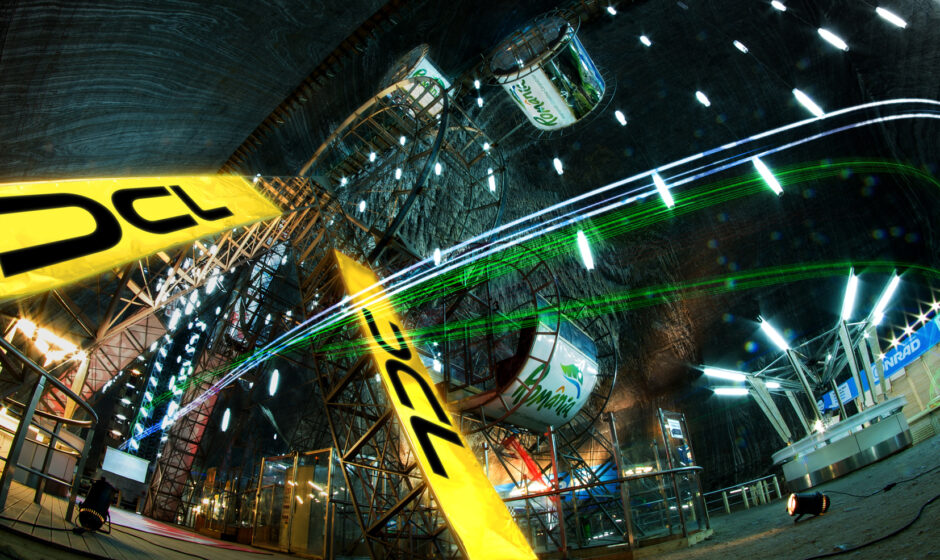The Drone Champions League (DCL) is one of the most exciting and challenging drone racing competitions in the world. Unlike traditional racing circuits, DCL events take place in a variety of unique and diverse environments, ranging from the open skies of scenic mountain landscapes to indoor stadiums filled with tight obstacles. This variability in race settings means that adaptability is a crucial skill for any serious DCL pilot.
Adapting to different environments is essential for consistent performance. Each type of race environment presents its own set of challenges, and the ability to quickly adjust your flying style, drone setup, and strategy can give you a competitive edge. In this comprehensive guide, we’ll explore strategies and techniques to help you adapt to different environments in the Drone Champions League.
1. Understanding the Different Types of DCL Environments
DCL races are known for their diverse and dynamic locations. Here are some of the common environments you’ll encounter:
a. Outdoor Courses
Outdoor tracks are set in stunning natural landscapes like mountains, valleys, and lakes. These courses are often expansive, allowing for high-speed racing and long straights, but they also come with challenges like wind, temperature changes, and varying light conditions.
b. Indoor Courses
Indoor tracks are typically set in arenas, stadiums, or even historic buildings. These environments are characterized by tight spaces, sharp corners, and numerous obstacles. Indoor races require precision, quick reflexes, and excellent control.
c. Urban Tracks
Urban courses take place in city settings, utilizing rooftops, alleyways, and other man-made structures. These tracks are a mix of high-speed sections and technical maneuvers, often requiring pilots to navigate around buildings and through narrow passages.
d. Night Races
Night races add an extra layer of difficulty due to low visibility and the need for specialized lighting on your drone. Pilots must rely on illuminated gates, LED markers, and their drones’ lights to navigate the course.
Understanding the unique characteristics of each environment is the first step to adapting your strategy and setup for optimal performance.
2. Adjusting Your Drone Setup for Different Environments
A one-size-fits-all approach doesn’t work in Drone Champions League racing. To maximize your performance, you’ll need to adjust your drone’s setup based on the environment.
a. Propeller Selection
Propellers are one of the easiest components to swap out, and choosing the right ones can make a significant difference.
- Outdoor Tracks: Use larger, more aggressive propellers (like 5.1-inch props with a higher pitch) to maximize speed and power for open spaces.
- Indoor Tracks: Opt for smaller, less aggressive props (like 4.8-inch or low-pitch 5-inch props) for better control and maneuverability in tight spaces.
b. Motor and ESC Tuning
Motor and ESC (Electronic Speed Controller) tuning can help optimize performance based on environmental conditions.
- Outdoor and High-Speed Races: Use high KV motors (2500-2800 KV) for better acceleration and top-end speed.
- Indoor and Technical Tracks: Lower KV motors (2000-2300 KV) can provide smoother throttle response, which is essential for navigating tight spaces.
c. Camera Angle and Field of View (FOV)
The camera angle plays a crucial role in how you perceive the track and obstacles.
- Outdoor Tracks: Use a higher camera angle (35-45 degrees) to focus on the horizon and maintain visibility at high speeds.
- Indoor Tracks: Lower the camera angle (20-30 degrees) for better visibility of gates and obstacles directly in front of you.
d. Battery Selection
Battery size and type can affect your drone’s weight and flight time.
- High-Speed Races: Use higher-capacity batteries (like 1500mAh to 1800mAh) to provide more power and longer flight times.
- Technical and Indoor Races: Opt for lighter batteries (like 1300mAh to 1400mAh) to reduce weight and improve agility.
3. Mastering Throttle Control and Flight Dynamics
Adaptability isn’t just about hardware; it’s also about your flying skills. Different environments require different flight techniques.
a. Wind Management in Outdoor Races
Wind can be a significant factor in outdoor DCL races. To adapt:
- Use Throttle Blips: Quick throttle adjustments can help stabilize your drone in gusty conditions.
- Fly Low and Fast: Staying close to the ground can reduce the impact of crosswinds.
- Angle for Wind: Adjust your drone’s tilt to counteract strong side winds.
b. Precision Flying Indoors
Indoor environments demand precision and control:
- Master Slow Rolls and Yaws: Use gentle roll and yaw inputs to navigate tight turns.
- Practice Hovering: Being able to hover accurately will help you line up with narrow gates and obstacles.
- Reduce Throttle Sensitivity: Adjust your radio transmitter’s throttle curve for smoother control in confined spaces.
c. Navigating Complex Urban Courses
Urban courses are a mix of speed and precision:
- Use Throttle Cut: Employ throttle cut techniques to quickly drop altitude when navigating between buildings or under bridges.
- Fly with a Purpose: Memorize the course layout to anticipate turns and obstacles, which can improve your flow and reduce reaction time.
4. Optimizing Your Strategy for Different Race Types
Each DCL environment requires a different race strategy. Here’s how to adapt:
a. Outdoor Races: Focus on Speed and Consistency
Outdoor tracks are usually longer, so your goal is to maintain high speeds without crashing.
- Prioritize Acceleration: Use straight sections to build up speed, but be ready to throttle down for sharp corners.
- Manage Battery Efficiency: Outdoor races can be longer, so monitor your battery usage to ensure you don’t run out of power mid-race.
b. Indoor Races: Prioritize Precision and Control
Indoor tracks require quick reflexes and accurate flying.
- Memorize the Track: Take advantage of practice sessions to memorize every gate and obstacle.
- Focus on Smoothness: Jerky movements can lead to crashes in confined spaces, so aim for smooth and controlled inputs.
c. Urban and Mixed Courses: Adapt to Changing Conditions
Urban environments require a mix of speed and technical flying.
- Plan Your Lines: Look for optimal racing lines that allow you to maintain speed while navigating obstacles.
- Adjust Mid-Race: Be prepared to change your flying style if conditions (like wind or lighting) change during the race.
5. Mental Preparation and Focus
Adapting to different environments isn’t just about physical adjustments; mental preparation is equally important.
a. Visualization Techniques
Visualize flying through the track before the race starts. This helps you mentally prepare for the environment and anticipate challenges.
b. Stay Calm Under Pressure
New environments can be intimidating, especially if they’re unfamiliar. Use deep breathing techniques to stay calm and focused.
c. Review and Reflect
After each race, review your performance. Analyze any mistakes and think about how you can adapt better in future races.
6. Practice and Simulation
The best way to adapt to different environments is through practice. Here are some ways to prepare:
a. Use Drone Racing Simulators
Simulators like DCL – The Game are perfect for practicing in different environments without risking your drone. Try different tracks to get comfortable with both indoor and outdoor settings.
b. Set Up Your Own Practice Course
If you have access to an outdoor space, set up a DIY practice course with varying obstacles. This can help you simulate different race environments.
c. Join Local and Online Races
Competing in various local or online drone races can expose you to different track types and environments, helping you build adaptability.
Conclusion
Adapting to different environments in the Drone Champions League is a multifaceted challenge that requires a combination of the right equipment, flying skills, mental preparation, and strategic planning. By understanding the unique demands of each type of race environment, adjusting your drone setup, and honing your flying techniques, you can significantly improve your performance.
Remember, adaptability is one of the key traits that distinguish top pilots from the rest. The more versatile you are in adjusting to different environments, the better your chances of success in the competitive world of drone racing. Happy flying, and may you conquer every racecourse that comes your way!



